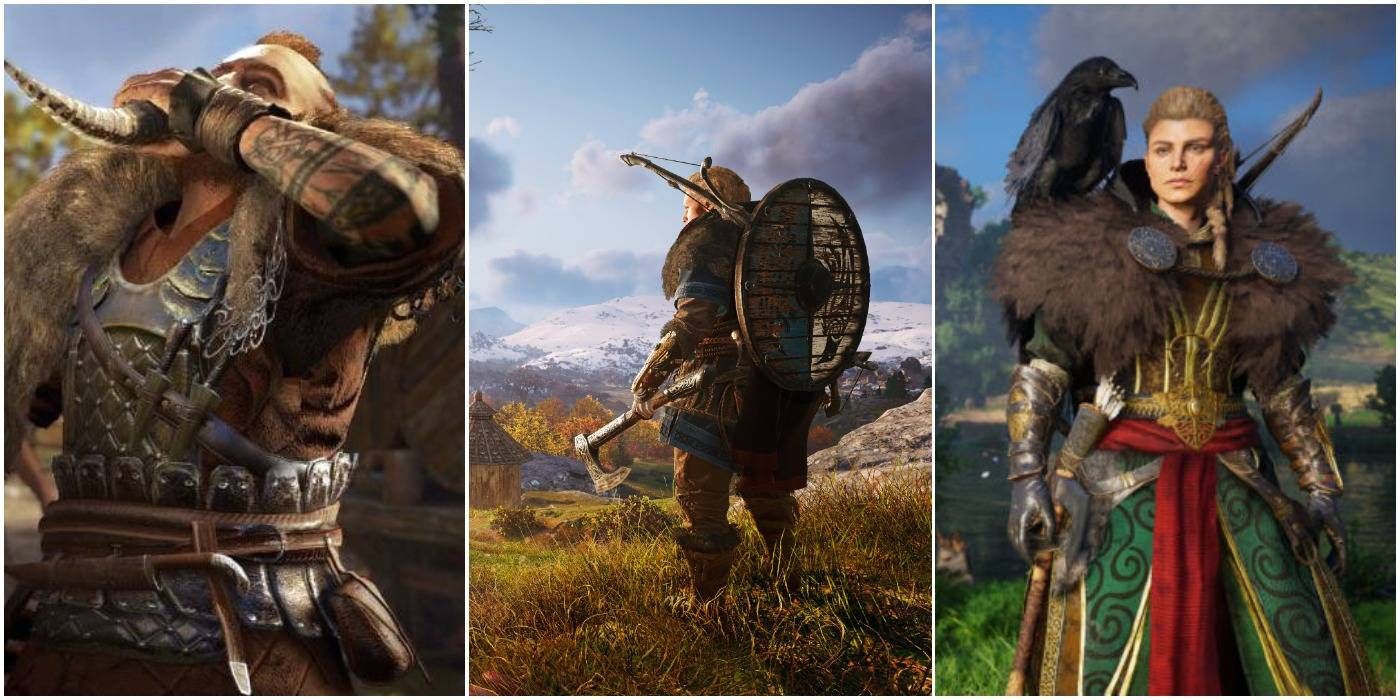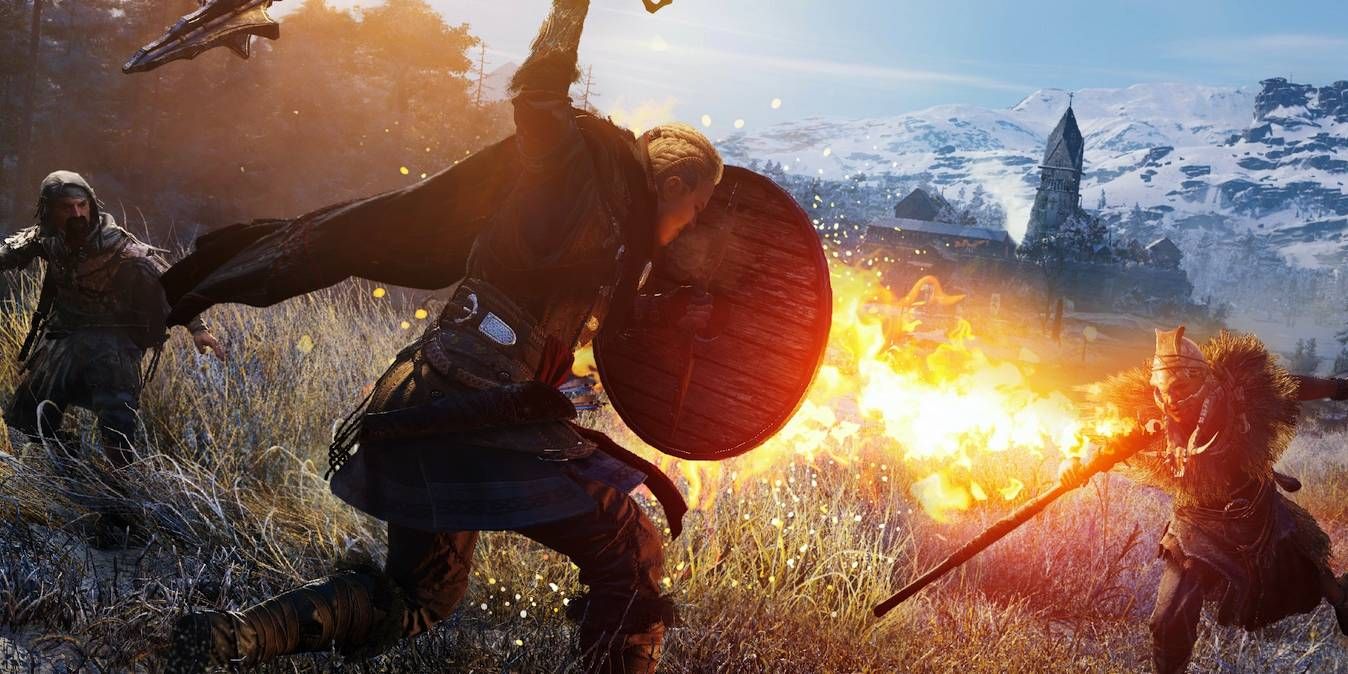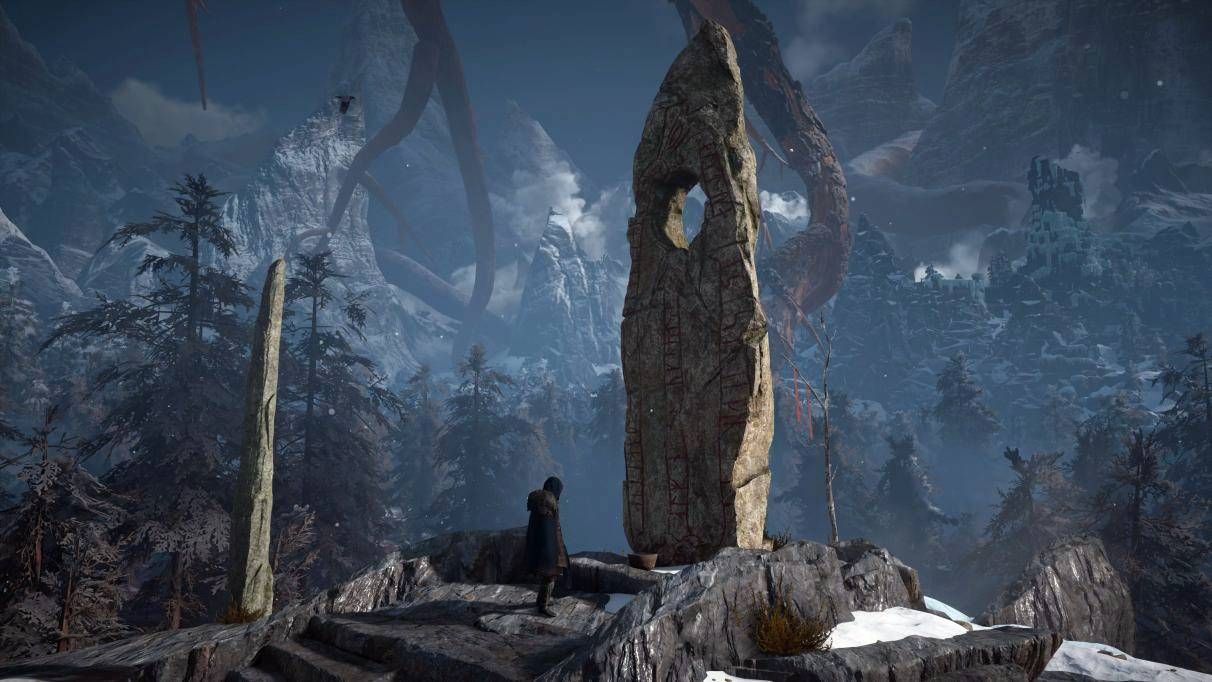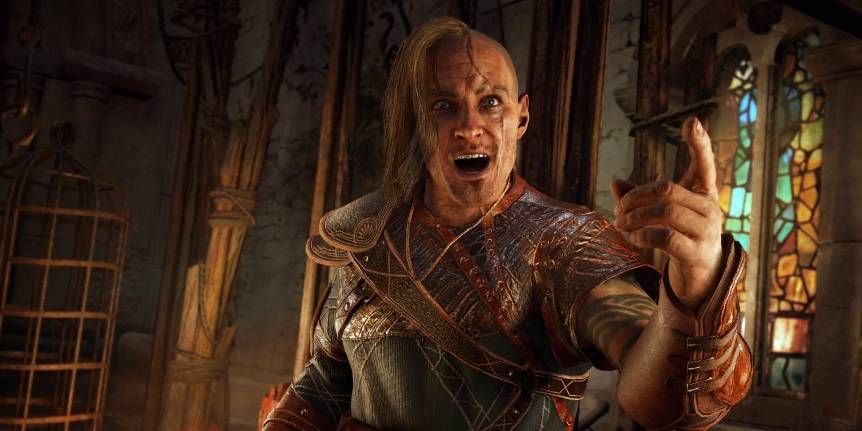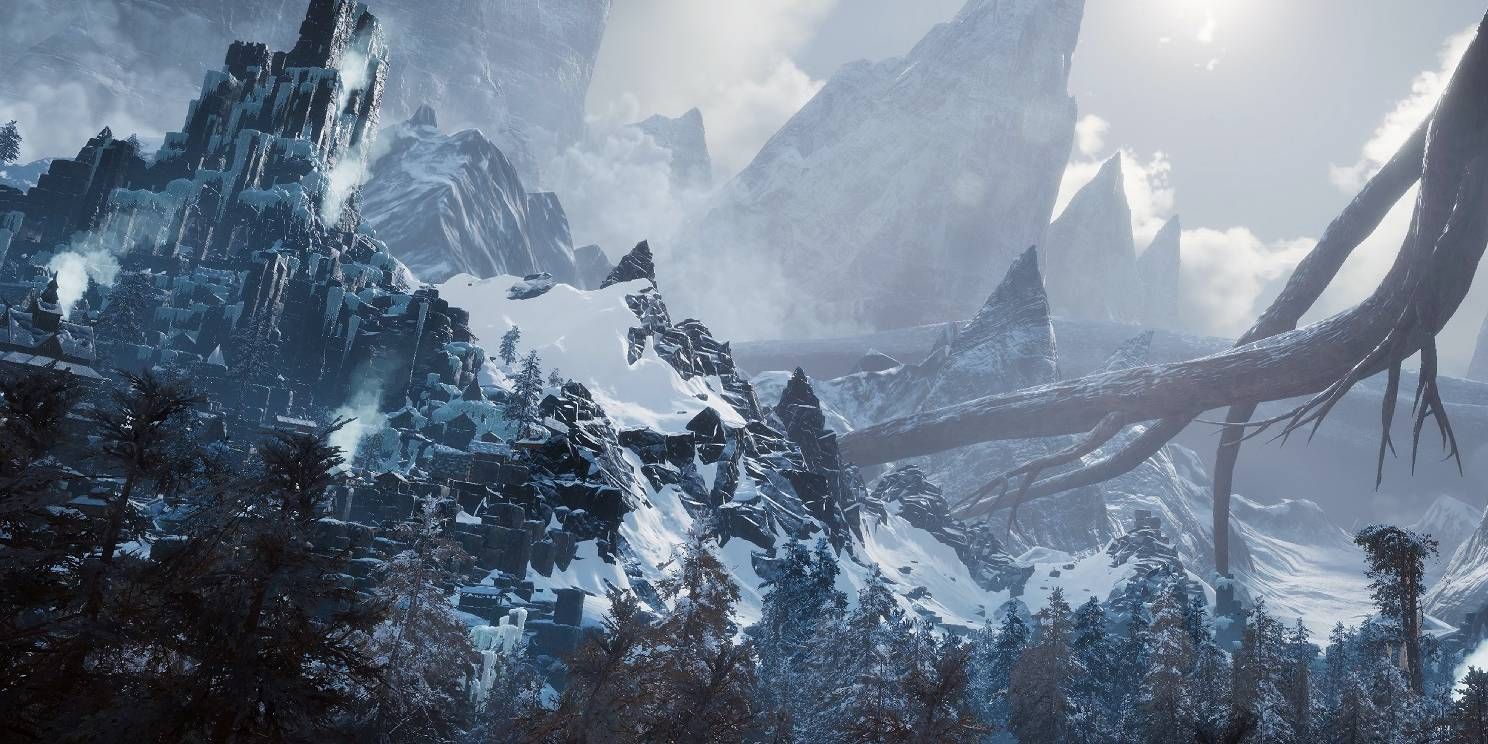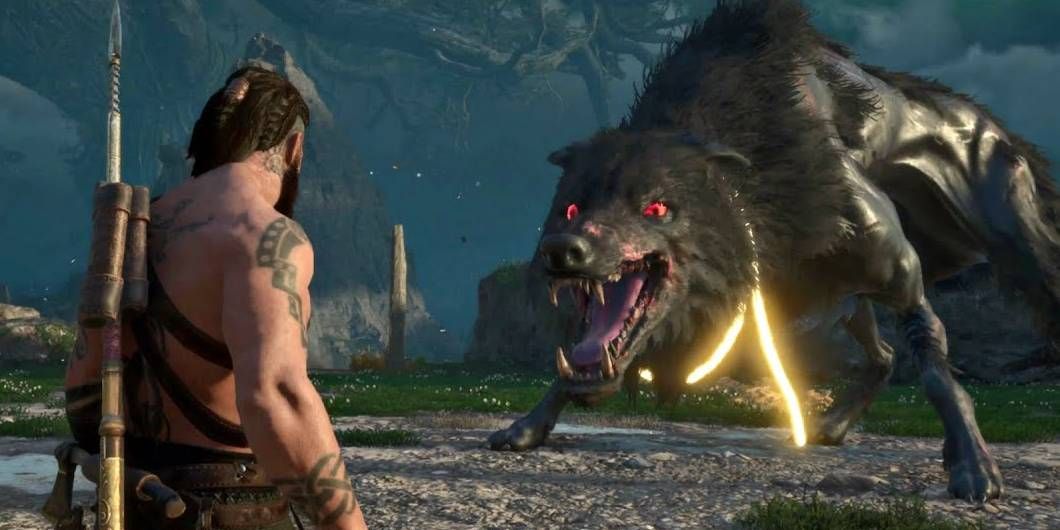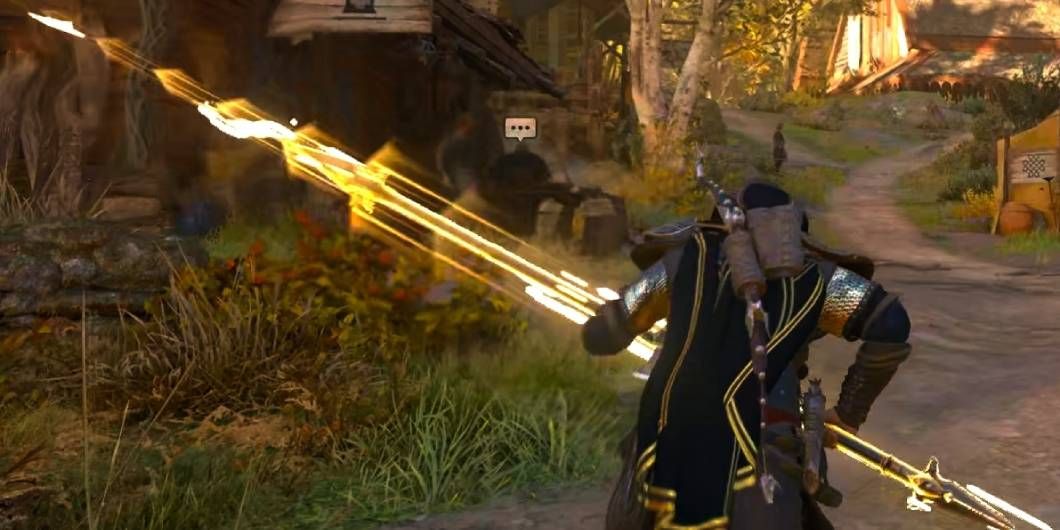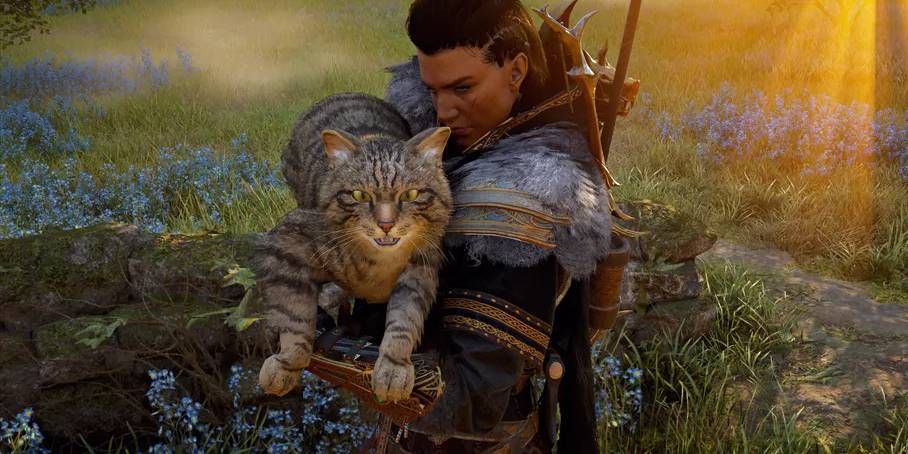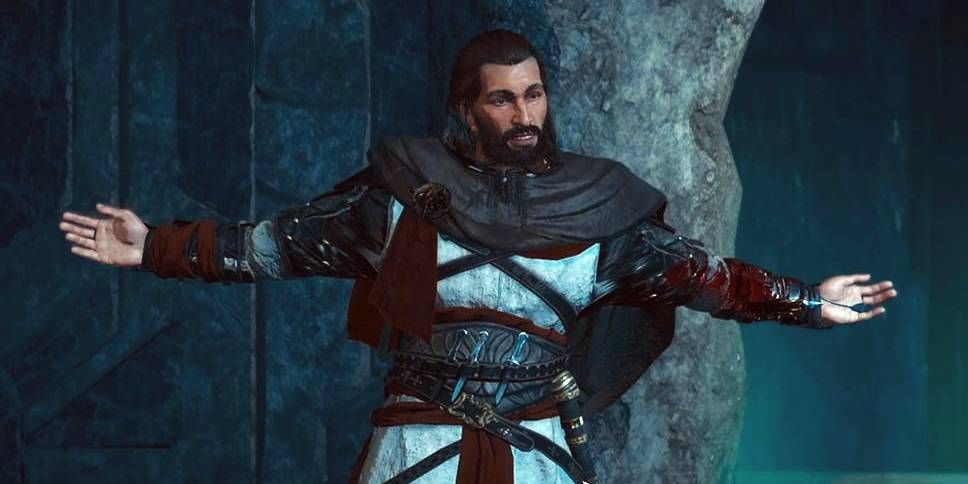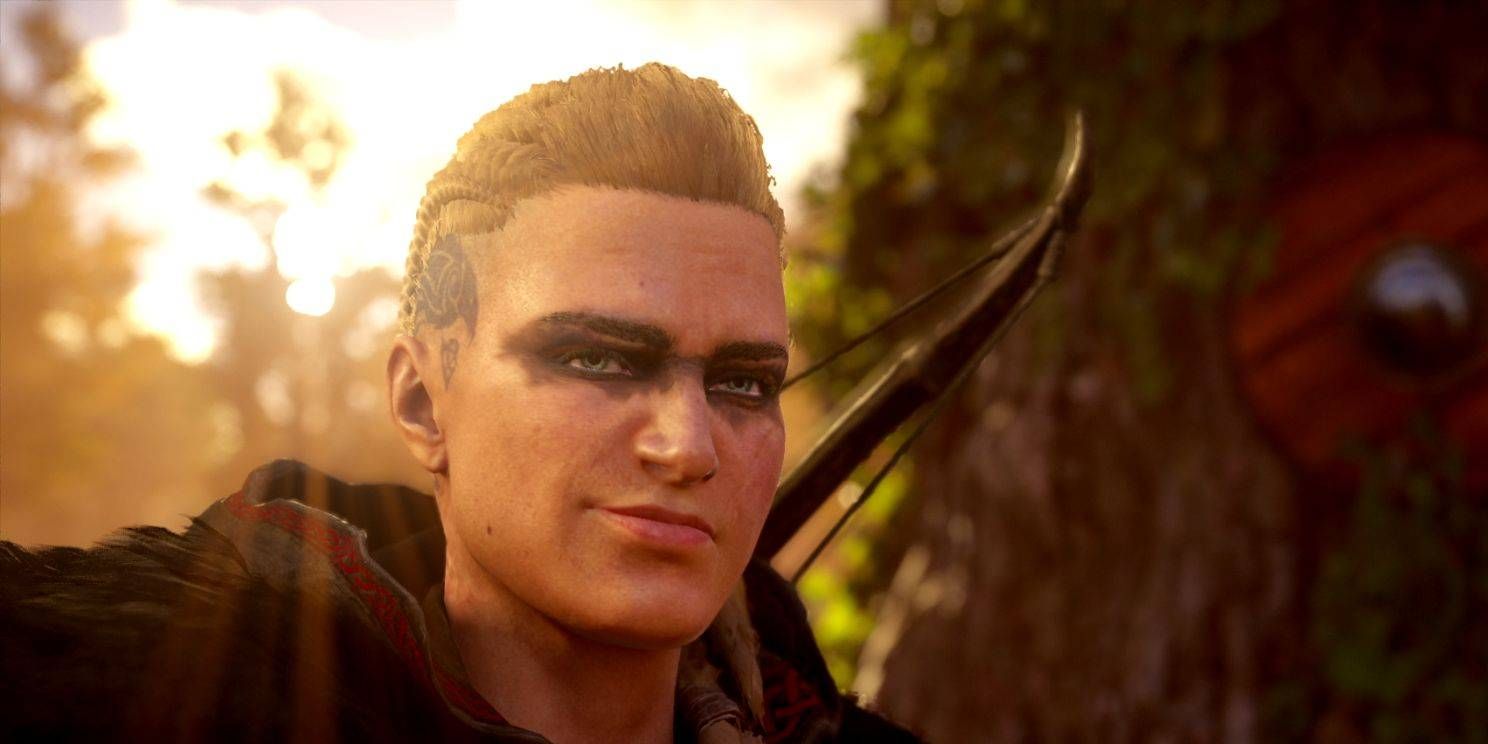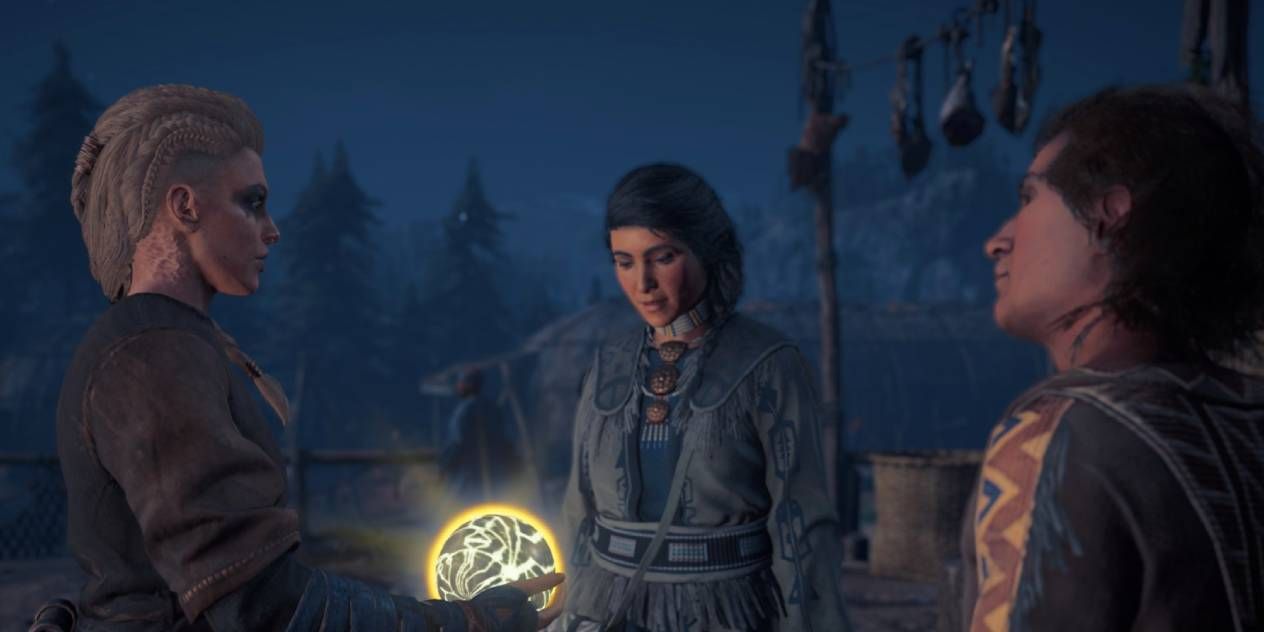Assassin’s Creed Valhalla is the most recent game in Ubisoft’s popular Assassin’s Creed franchise. Set in 873AD, this latest release is a retelling of the early Norse raids on Britain, following Eivor — a male or female viking raider — as they became entangled in the familiar conflict between the Brotherhood of Assassins and the Knights Templar.
While the games have always drawn inspiration from history (with a laudable amount of research done by the teams involved) did you know that Valhalla also has more than its fair share of mythological references? Here are our ten favorites.
10 What's In A Name?
The title of the latest game in the Assassin's Creed franchise is, itself, a mythology reference. Valhalla is the name given to the most well-known of the Norse underworlds; in this case, Odin's Hall. While half of those who die in battle go to the goddess Frejya's Hall, Fólkvangr, the other half go to Valhalla. Those who do are called the Einherjar or "those who fight alone," and their reward in the afterlife is days of fighting, feasting, and drinking until the day that Odin calls them to battle once more at Ragnarök, or the End of Days.
9 Getting High with the Æsir
The Gods — or ‘Æsir’ as they are better known in mythology — very much get a cameo in Valhalla! At a few stages in the story, Eivor has the chance to ascend to Valhalla through a drug-induced trance, meeting with his Gods and even fighting alongside them.
While their portrayal of the Gods may feel all too human to the casual viewer, the Norse believed the Æsir to be just as fallible as any mortal and told tales of them walking amongst them in disguise. And it's not just Valhalla where the Gods get their mention. A number of the collectibles in the game also reference the Æsir, such as Ymir's Blood Stones. Your raven, too, is a nod to Odin's messengers, Huginn and Muninn.
8 Epic Viking Rap Battles
A new mechanic in Valhalla called 'flyting' has Eivor pitting their wits against verbose opponents in an “epic viking rap battle,” where sharp insults and self-brags alike are needed to earn victory. While flyting was a common pastime amongst the Norse, it was also a favorite hobby of the Gods.
In the Icelandic poem ‘Lokasenna,’ trickster God Loki gatecrashes a party held by the Gods. He insults each of them one by one, implying infidelity, stupidity, and cowardice before Thor chases him away.
7 An Experience of (Frost) Giant Proportions
Nothing says "excellent yet creepy mythological fights" quite like Jotunheim; just as God of War 4. One of the nine realms in Norse Mythology, Jotunheim is the home of the giants, also known as Jötunn. Giant is a bit of a misnomer — while some of them are enormous men, others Jötunn include both Loki and his child the world-serpent Jörmungandr.
Jotunheim is another place that Eivor can visit in Assassin's Creed Valhalla. A couple of the mysteries you can find there are also little Easter Eggs; Fimbulwinter is the three years of winter that will herald Ragnarök, and Ægir is a Norse God of the sea.
6 Not A Very Good Boy, Really
The final boss battle in Assassin's Creed: Valhalla is against a very enormous wolf that is familiar to anyone who knows a little about Loki's "extra-curricular" relationships. Fenrir is one of three children that Loki had with the giantess Angrboða, often referred to as "the mother of monsters." There is Fenrir (the aforementioned giant wolf responsible for Tyr being one-handed), Jörmungandr (the serpent whose length wraps around the entire world), and the guardian of Helheim, the half-dead queen Hel.
Fenrir is an example of self-fulfilling prophecy in Norse Mythology. He was bound by the Gods who feared his size — and teeth — and grew rather understandably bitter about the situation. At Ragnarök he is destined to swallow the sun and Odin; both whole, and in that order.
5 Dude, That's My Spear!
One of the best legendary weapons in the game — and consequently, one of the trickier ones to get — is a spear called Gungnir. In fact, you can't even see the spear until the end game. But did you know that Gungnir's first owner was Odin himself?
The Eddas tell the story in more detail, but as repayment for some of his usual mischief, Loki orchestrates a battle of blacksmiths between two groups of dwarves that results in some of the most famous artifacts in Norse Mythology being created. Thor's hammer Mjölnir, the gold-generating ring Draupnir and of course, Odin's spear.
4 Do You Have A Moment To Talk About Cats?
In Norse Mythology, the Goddess Freyja is known for three things; her gold necklace, her flying chariot, and the beautiful, giant cats that pull the chariot. Their names (very important information, you understand) are Bygul and Trjegul, according to some people. Whatever these wonderful beasts are called they are enormous, blue-grey and a gift from Thor.
Assassin's Creed: Valhalla is not a game lacking in animal representation. There are mythological beasts you can hunt, a giant wolf that you can ride, and — of course — cats. One cat in particular that can be found in one of the longhouses you build is especially friendly and demands Eivor's attention.
3 An Áss By Any Other Name
No, we're not being rude. The singular form of Æsir is, in fact, Áss; and no God fits this fun, accidental play on words better than a certain famous trickster, Loki. Especially when you work out that he's in disguise in Eivor's world (Basim) and has been up to some funny business.
Loki's not the only god we see in the waking world. Tyr — the one-handed God of Justice — also has a role in Eivor's life as Sigurd. There are hints as well that Eivor's alter-ego in the Asgard sections, Hávi, is none other than Odin; a God famous for having hundreds of names, one of which is "High One," or Hávi.
2 Gender Roles? Hardly Know 'Em
While the in-game explanation for why Eivor is canonically both a man or a woman is that the data in the Animus is corrupted, it could have been an intentional move on the developers part to mimic a Norse concept known as "ergi."
Though the term translates literally as "unmanly" it is often used to denote times that gender roles have been turned on their head. It crops up in Norse Mythology, too. The sort of magic that Odin practices, seiðr (future-telling) is thought of as feminine magic, and some scholars consider him and Loki to be gender-queer due to other supporting evidence.
1 It's The End of The World (As We Know It)
As is common in the franchise, Assassin's Creed: Valhalla links back to another game — in this case, Assassin's Creed 3. A little known fact about the vikings is that as well as famously traveling East and landing in Britain, they also went West and spent a little time in a land they called Vinland. You might know it better as Canada.
Eivor has the chance to go to Vinland, and while there discovers a Piece of Eden which he leaves with the resident Kanien'kehá:ka nation; the people that Ratonhnhaké:ton (Connor) is a part of. While only loosely connected to the plot in England, this inclusion is interesting as it has a role analogous to preventing Ragnarök in our hero's life. Were the Templars to get hold of this Isu technology, it would be the end of the world.

